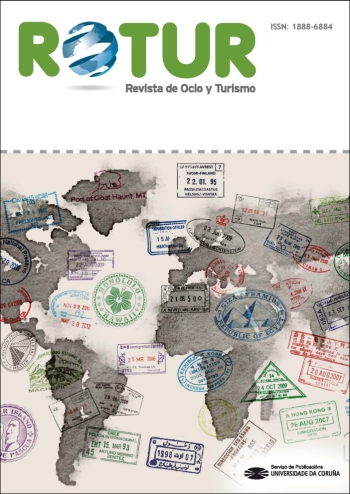Degradation in the roads between Airport and Hotels, and Tourism in the View of Taxi Drivers of Belém (PA/BR)
Main Article Content
Abstract
Due to its culture and attractions, the city of Belém (PA) has a very strong tourist flow. However, for receiving many visitors, the city is targeted by several types of degradations that in most cases give the idea ofabandonment which cause a dissatisfaction with those who arrive here. The objective of this article is to show areas degraded by anthropic action caused on the routes indicated by the taxi drivers of the Airport of Belém. The methodology used was the application of a multiple choice questionnaire, applied to taxi drivers of the Cooperative. Then, the main routes were identified which were traversed to identify the anthropogenic degradations and the data for the statistical analysis. The City of Belém suffers from urban degradations, often caused by visitors and sometimes by residents of the region. Unfortunately, they are scattered around corners in the City. With these records it was possible to conclude that the lack of concern with these areas is very clear, making it obvious that these respective places are drifting from oblivion, doomed to become increasingly degraded, promoting the image of a dirty city with tourism outdated.
Keywords:
Downloads
Metrics
Article Details
References
Confederaçao nacional de transporte (2017): Transporte Rodoviário - Desempenho do Setor, Infraestrutura e Investimento. Disponível em: http://cms.cnt.org.br. Acesso em: 10 de agosto de 2017.
Gadotti, M (2009): Educar para a sustentabilidade. São Paulo: Instituto Paulo Freire.
Costa, M. (2001): Gerenciamento de resíduos sólidos. Monografia (Curso de Especialização de Engenharia Ambiental) UFPR/IEP.
Dias Flavio A. O. P. (2007): Serviços de táxi: elementos para um novo modelo regulatório. 98 f. Dissertação (Mestrado em Transportes)-Universidade de Brasília, Brasília.
Ecilmara, M. (2006): O patrimônio Histórico e Cultural: um passeio pela “Cidade das Mangueiras”. Revista Turismo. Disponível e https://www.revistaturismo.com.br/artigos/mangueiras.html
Ernesto, C. (1937): Noções de História do Pará. IHGP. Belém (PA).
Ferreira, A. A y Fleury, J. N. (2012): Ver o Peso da cidade: O mercado, a carne e a cidade no final do século XIX. Revista Estudos Amazônicos, 1:100-116.
História do Pará. Disponível em: http://pt.wikipedia.org/wiki/Hist%C3%B3ria_do_Par%C3%A1. Acesso em: 15 de dezembro de 2015.
Instituto brasileiro de geografia e estatística (2005): História do Pará. Disponível em: <http://www.ibge.gov.br>. Acesso em: 8 jul. 2016.
Lefbvre, H. (1983): La revolución urbana. Madrid: Alianza Editorial.
Lins, H. N. (2001): “Cooperativas de trabalhadores: opção frente à crise do emprego ou aspecto da crescente precariedade do trabalho?” Nova Economia (UFMG). Belo Horizonte, 11(1): 39-75.
Organização das Cooperativas Brasileiras (2015): Institucional. Disponível e http://www.ocb.org.br/site/ramos/transporte_conceito.asp acessado em 27/8/2015.
Organización Mundial Turismo (2003): Turismo Internacional: uma perspetiva global. 2º Edição. Editora Bookman (Artmed): Porto Alegre.
Rodrigues, A. M. (1998): Produção e consumo do e no espaço: problemática ambiental urbana. São Paulo: Hucitec.
Rushmann, D. V. M. (1997): Turismo e planejamento sustentável: a proteção do meio ambiente. Doris Van de MeeneRushmann-Campinas, SP, Papirus. (Coleção de Turismo).
Sanchez, L. E. (2013): Avaliação de Impacto Ambiental: conceitos e métodos. Ed. São Paulo: Oficina de textos.
Swarbrook, J. (2000): Turismo Sustentável: Conceitos e Impacto Ambiental. São Paulo: ALEPH.







